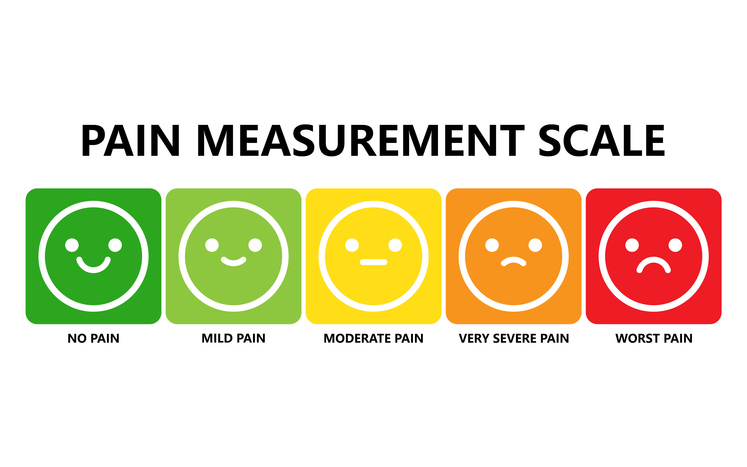Pain
The Indiana Polyclinic Combined Pain Scale

The Indiana Polyclinic Combined Pain Scale, or IPCPS, was developed in 2001 at the Indiana Polyclinic in Indianapolis, Indiana, United States. It is a multidimensional pain scale developed by Dr. Dimitry Arbuck and his team; they found that descriptors were missing from pain scales and that descriptions added objectivity to otherwise subjective scales.
The IPCPS is a combination of four scales that each have a numerical rating and a verbal description. Each scale has descriptors that correspond with a number to assist individuals in determining ratings which range from zero to ten.
The four scales are divided as follows: 1) pain intensity, 2) ability to function on a daily basis, 3) depression and 4) anxiety. These four scales provide a comprehensive understanding of an individual’s pain experience. While the IPCPS may seem overwhelming at first glance, individuals become familiar with it over time. This in-depth pain scale provides both physicians and individuals with a reliable tool for the evaluation of pain levels, functionality and emotional distress.
Initial report
An individual can typically complete the IPCPS without assistance. The IPCPS is reviewed by a health care provider, and a discussion between the physician and individual affords time for any questions. This process provides both the individual and the health care provider with clarification regarding pain levels. The IPCPS should be used frequently, as pain levels often fluctuate.
Pain level
Pain levels are rated from none to the worst imaginable with descriptions and examples to provide an accurate account of pain. The IPCPS gives two examples and a detailed description of each rating number on the scale. The detailed descriptions help individuals provide an accurate pain level report.
Function deficiency
Chronic pain can interfere with daily activities. The IPCPS uses a function rating scale that ranges from completely independent to totally dependent. A “functional independence measure” questionnaire is used to evaluate independence levels. Individuals complete a report prior to meeting with a health care provider. Each number corresponds with a description which renders an accurate report of limitations.
Depression and anxiety
Chronic pain often leads to the development of depression and/or anxiety. Changes in lifestyle and continual struggles with chronic pain can lead to mental health issues. As depression and anxiety increase, pain levels rise. When pain levels rise, depression and anxiety intensify, resulting in a vicious cycle. The IPCPS assists in measuring the levels of depression and anxiety. Each numerical rating is linked to a detailed description which helps individuals choose the correct numerical rating. The IPCPS allows individuals to accurately report any depression and anxiety experienced with chronic pain.
STAR evaluation
The IPCPS also contains a modified version of the “Screening Tool for Addiction Risk” (STAR). This tool was developed to check individuals for possible signs of opioid misuse prior to the start of opioid therapy. The Indiana Polyclinic created a modified version of the STAR evaluation with the permission of the original creators. The modified version evaluates for both inappropriate behaviors and illegal activities that may occur during long-term opioid misuse. The IPCPS-STAR contains 15 questions; it is quick to administer and easy to score. It does have limitations and has not been tested for validity.


















